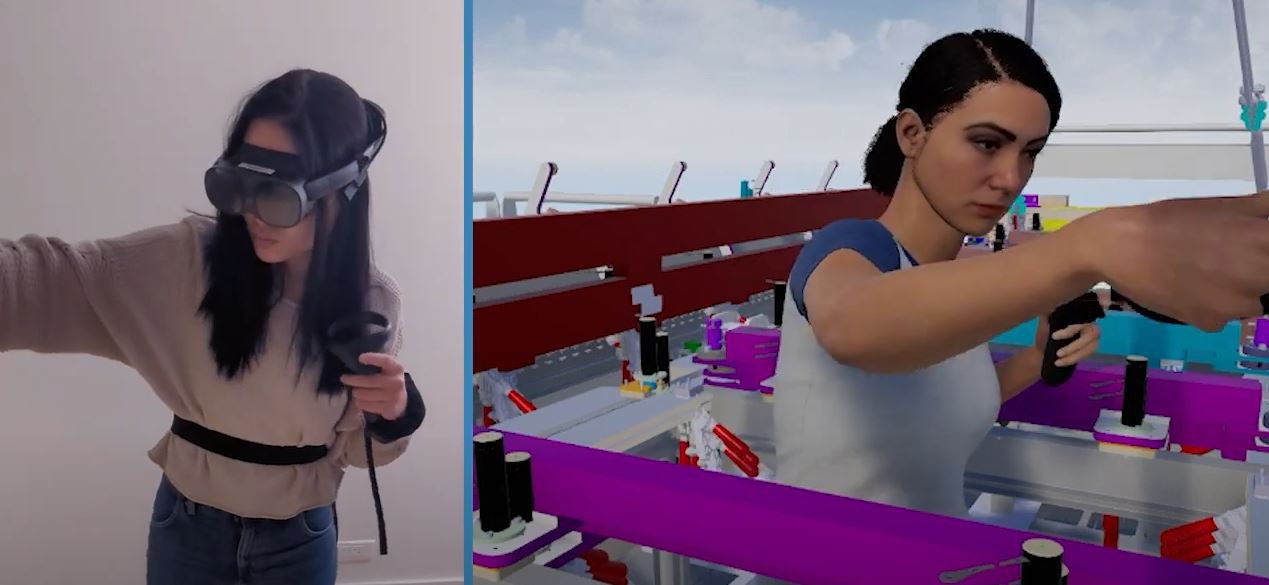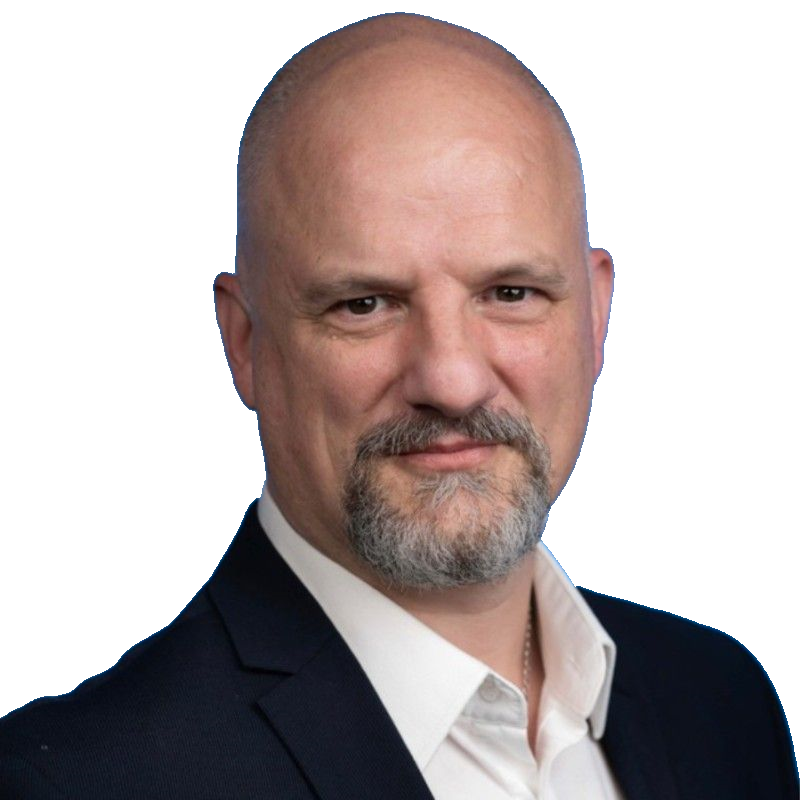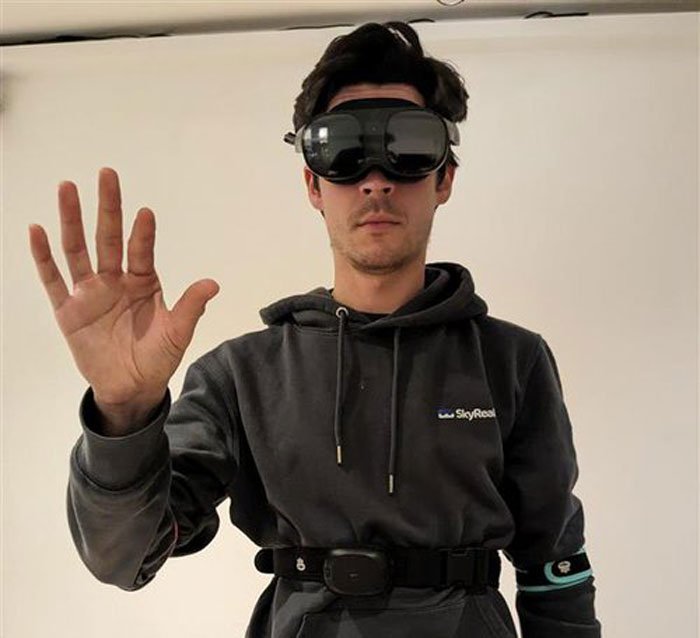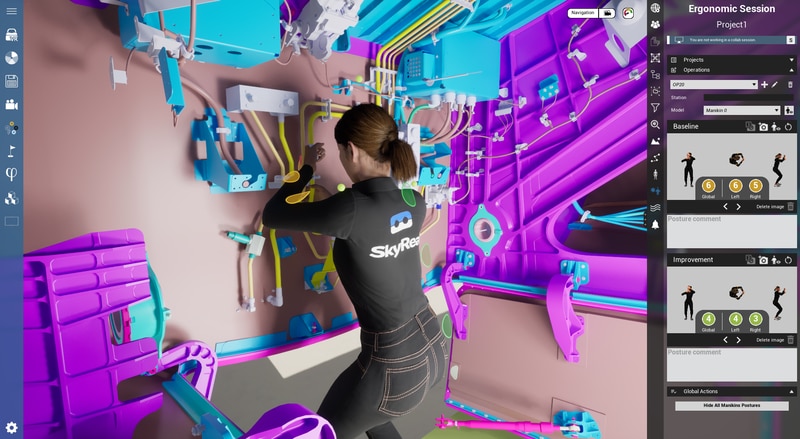Engineering the Perfect Fit: How SkyReal and HTC VIVE are Revolutionising Ergonomics in VR

Use Case | Training/Simulation | Case Study
5 minutes read
In the ever-evolving landscape of engineering, SkyReal isn't content with simply churning out another design platform. Yes, they're building a universal platform that leverages existing 3D data to expedite the creation of tomorrow's world. But for SkyReal, the true marvel lies not in the structures themselves but in the people who breathe life into those designs. SkyReal is a start-up in Paris that is setting new standards in the use of VR in modern engineering with a vision that goes beyond steel and concrete to encompass the human factor. As a result, they are offering a metaverse for industries in which engineers can immerse themselves to design, collaborate, and produce.
 SkyReal’s Channel Director, Philippe Gateau, says that “we are now entering a phase where the emphasis is on the importance of the human factor, putting the individual, whether operator or learner, back at the heart of the process.”
In this regard, SkyReal, empowered by HTC VIVE technology, is revolutionising the field of ergonomics. They are transforming the way we assess and optimise workplaces for maximum efficiency and, more importantly, human comfort.
SkyReal’s Channel Director, Philippe Gateau, says that “we are now entering a phase where the emphasis is on the importance of the human factor, putting the individual, whether operator or learner, back at the heart of the process.”
In this regard, SkyReal, empowered by HTC VIVE technology, is revolutionising the field of ergonomics. They are transforming the way we assess and optimise workplaces for maximum efficiency and, more importantly, human comfort.
The problem that SkyReal has solved
Initial Virtual Reality solutions for engineering are often clunky, complex beasts. SkyReal yearned for a system that mirrored their own philosophy – intuitive, powerful, and accessible. Deployment needed to be a breeze, a plug-and-play affair that wouldn't require a team of tech wizards on standby. Based on the RULA methodology, Skyreal offers semi automated solution to optimize the workstation thanks to a VR Manikin (a digital twin of the operator). Therefore, accuracy was paramount. Precise body tracking was the key to replicating real-world in VR, ensuring a truly immersive experience that accurately reflected human movement and interaction with their environment. The faithful reproduction of body movements and interactions with virtual objects was a critical technical issue for the project. Finally, comfort was a non-negotiable factor. Providing a comfortable VR experience over extended periods was a significant challenge, requiring equipment that not only performed well but was also comfortable.

Game-changing solutions to problems
Enter HTC VIVE, with a suite of solutions that resonated perfectly with SkyReal's vision. The Ultimate Trackers were a game-changer. Gone were the days of bulky camera setups and imprecise tracking that left room for error. These new trackers offered effortless installation and superior precision, all without needing a dedicated team to manage them. The XR Elite Headset was another stroke of genius—lightweight and ergonomically designed, it ensured that VR sessions wouldn't leave users feeling like they'd just emerged from a heavyweight boxing match. The combination of these two technologies was a revelation for SkyReal. The team couldn't stop raving about the unprecedented ease of use and the unparalleled tracking accuracy. No more wrestling with frustrating setups; now, they could channel all their energy into crafting immersive experiences that pushed the boundaries of ergonomic assessments. “HTC VIVE's specific tools proved particularly beneficial to our project, combining Ultimate Trackers with the XR Elite headset,” says Gateau. He adds that “this combination provided a complete solution that met all the needs of our project.”
Proven results
The real-world results were nothing short of transformative. Ergonomic studies, once a time-consuming and often tedious affair, have become streamlined processes. Gateau says that according to their clients, “the combination of Skyreal and HTC VIVE Ultimate Trackers allows them to make ergonomic studies four times faster than before, while achieving a higher level of precision. This is a huge step forward for ergonomics in industries because they can anticipate many situations.” But speed wasn't the only benefit. The exceptional tracking capabilities allowed for real-time workload monitoring, providing invaluable data that could be used to optimise workstation design in a way that traditional methods simply couldn't. This data-driven approach has ensured that ergonomics aren’t based on guesswork or anecdotal evidence but on a clear and quantifiable understanding of how an individual's movements interact with their environment. Imagine being able to identify potential strain points or areas where fatigue might set in before they ever become a problem—this is the power that SkyReal and HTC VIVE have unlocked. Another unexpected benefit emerged from this technological partnership – a reduction in travel. VR’s immersive nature has allowed ergonomists to conduct evaluations remotely, eliminating the need for them to physically visit each workstation. A win for both efficiency and saving travel costs.

The perfect VR partner
SkyReal acknowledges that their success isn't solely a product of their own ingenuity. The unwavering support and exceptional product quality from the HTC VIVE team have been a cornerstone of their achievements. Gateau says that they’d used various tracking systems in their VR projects in the past, “but the ease of use and efficiency of the HTC VIVE Ultimate Trackers were a revelation for us. As soon as they were integrated, the whole team was enthusiastic about the simplicity with which we were able to implement them and the precision of the tracking they offered. It was the first time that the whole process had gone so smoothly, which reinforced our conviction in choosing HTC VIVE as our technology partner for our VR needs.”
This is only the beginning
SkyReal believes this is merely the first chapter in a much larger story. Their unwavering focus on human factors, coupled with HTC VIVE’s cutting-edge hardware, is paving the way for a dedicated ergonomics module within their platform. They envision a future where 3D-based ergonomic studies become the norm, thanks to their cost-effectiveness and rapid implementation. Skyreal believes that the rapid implementation and low cost of a 3D-based ergonomic study (even taking into account a computer, a VIVE XR Elite headset, and five Ultimate Trackers ) will be decisive in rapidly improving musculoskeletal disorder studies to become standard. Easily deployable solution, like the HTC VIVE LBSS suite , will bring VR within reach of a wider range of ergonomists, democratising this powerful tool and ensuring that the benefits of VR reach more people. “The support and competence of the HTC VIVE teams, as well as the quality of the product, are essential elements for the development of solutions like those we offer. It is human factor centric projects involving ergonomics, MSD reduction and penibility assessment that will accelerate the penetration of VR into daily labour” says Gateau.
Discover more from Skyreal: